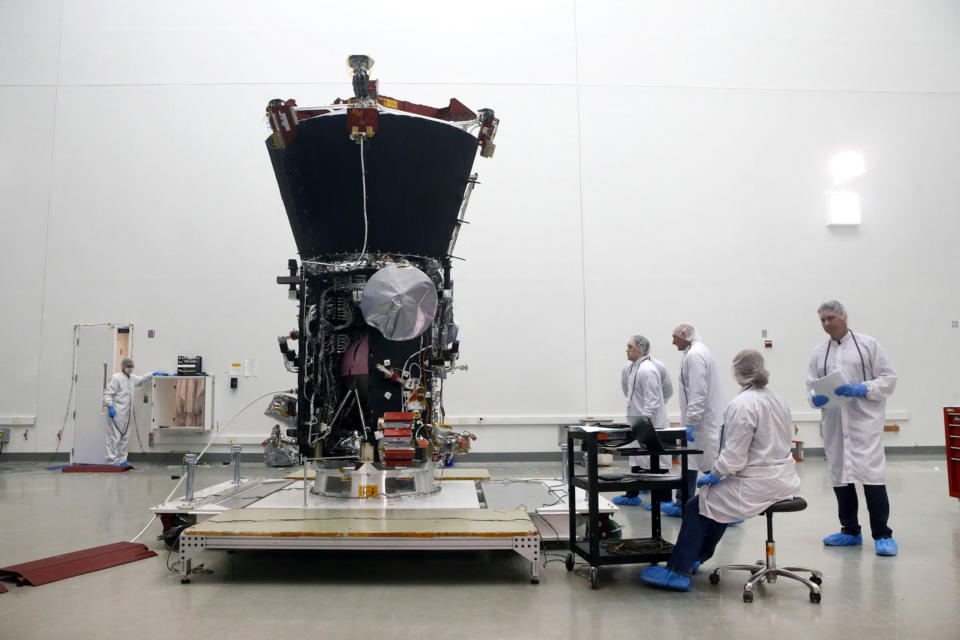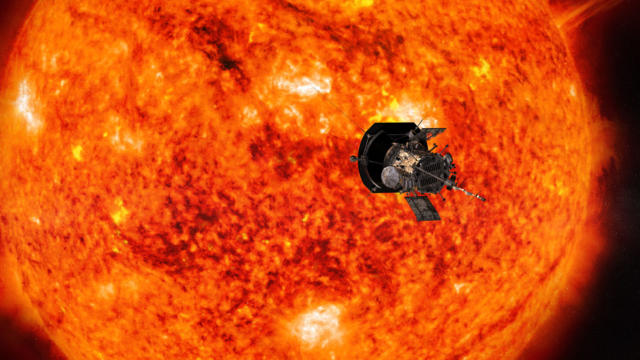NASA is preparing for the launch of one of its most-daring missions ever. The Parker Solar Probe will launch in early August and it’s part of a seven-year mission to study the sun. The car-sized spacecraft will go closer than any human-made object. John Zarrella reports from Cape Canaveral, Florida.
Follow John Zarrella on Twitter @ZarrellaJohn
Sixty years ago, scientists first proposed a mission to study the sun. Now, they finally have the technology to make it happen. During its seven-year mission, the Parker Solar Probe will orbit the sun two dozen times. It’s closest approach within six million kilometers of the surface, which is seven times closer than any spacecraft ever.
Why a trip to study the sun? The more we know about it, the better we can understand how life developed here on earth. Also, as scientists say, the sun does some head scratching stuff.
Off the surface, in the corona, temperatures are thousands of degrees hotter than on the surface. Laws of physics say that shouldn’t happen. Meanwhile, little is known about solar winds that begin as a gentle breeze but zip by Earth at hundreds of kilometers per second. Disturbances in this solar wind, called space weather, can interrupt communications, change the orbit of satellites.

NASA’s Parker Solar Probe sits inside a cleanroom at Goddard Space Flight Center, Wednesday, March 28, 2018, in Greenbelt, Md., as workers prepare it for launch. The spacecraft, which is scheduled to launch this summer, will travel closer to the Sun than any other spacecraft in history as it attempts to help researchers better understand stars throughout the universe. (AP Photo/Patrick Semansky)
Alex Young, Parker Probe Solar scientist, noted, “It creates a hazardous environment for astronauts and in the most extreme cases, these space weather events can affect our power grids here on Earth.”
As Parker makes its closest approach, the spacecraft’s state of the art carbon heat shield must stand up to temperatures of thirteen hundred degrees Celsius. On board sensors keep the heat shield lined up just right.
“It basically has to always be sensing whether or not the heat shield is in the right position and correct itself if it isn’t,” explained by Betsy Congdon, Thermal Protection System Lead Engineer.
Parker will pass through the corona at a stunning 700,000 kilometers per hour. At that speed, one could fly from Washington, D.C. to Tokyo in under one minute. The probe is also carrying a microchip containing more than one million names.
Star Trek actor, William Shatner, promoted the sign up effort: “This summer we’re going to touch the Sun.”
Going to a region of the solar system never before explored, Parker is considered one of the most daring missions of discovery ever undertaken.
 CGTN America
CGTN America This illustration from NASA shows Parker Solar Probe spacecraft approaching the sun. NASA is accepting online submissions until April 27, 2018, for sending your name on the spacecraft all the way to the sun. (NASA/Johns Hopkins APL/Steve Gribben via AP)
This illustration from NASA shows Parker Solar Probe spacecraft approaching the sun. NASA is accepting online submissions until April 27, 2018, for sending your name on the spacecraft all the way to the sun. (NASA/Johns Hopkins APL/Steve Gribben via AP)
